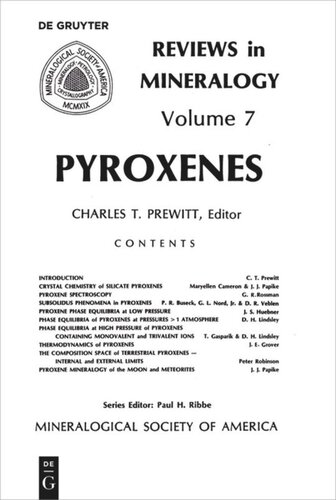

Most ebook files are in PDF format, so you can easily read them using various software such as Foxit Reader or directly on the Google Chrome browser.
Some ebook files are released by publishers in other formats such as .awz, .mobi, .epub, .fb2, etc. You may need to install specific software to read these formats on mobile/PC, such as Calibre.
Please read the tutorial at this link: https://ebookbell.com/faq
We offer FREE conversion to the popular formats you request; however, this may take some time. Therefore, right after payment, please email us, and we will try to provide the service as quickly as possible.
For some exceptional file formats or broken links (if any), please refrain from opening any disputes. Instead, email us first, and we will try to assist within a maximum of 6 hours.
EbookBell Team

0.0
0 reviewsVolume 7 of Reviews in Mineralogy reviews the essential aspects of pyroxene research. Recently, Deer, Howie and Zussman (DHZ) published a second edition of their volume in the Rock-Forming Minerals series, Single-Chain Silicates, Vol. 2A (John Wiley, New York, 1978). The present volume is intended to be complementary to DHZ and to provide material covered lightly or not at all in DHZ, such as electron microscopy, spectroscopy, and detailed thermodynamic treatments. However, because the range of pyroxene research has grown so much in recent years, there still are important areas not covered comprehensively in either of these volumes. Some of these areas are kinetics, diffusion, crystal defects, deformation, and nonsilicate pyroxene crystal chemistry. Because of these omissions and because this volume is intended for use with the MSA Short Course on Pyroxenes to be held at Emory University in conjunction with the November, 1980 meeting of the Society, a Symposium on Pyroxenes was organized by J. Stephen Huebner for the meeting that is designed to present the latest research results on several different topics, including those above. With DHZ, this volume, and publications from the Symposium, the student of pyroxenes should be well-equipped to advance our knowledge of pyroxenes in the decades ahead.